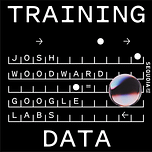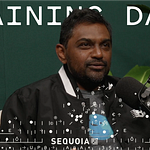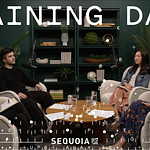Post methodology: Claude 3.7 via custom Dust assistant @TDep-SubstackPost with the system prompt: Please read the text of the podcast transcript in the prompt and write a short post that summarizes the main points and incorporates any recent news articles, substack posts or X posts that provide helpful context for the interview. Please make the post as concise as possible and avoid academic language or footnotes. please put any linked articles or tweets inline in the text. Please refer to Podcast guests by their first names after the initial mention. Light editing and reformatting for the Substack editor.In this episode, Josh Woodward, VP of Google Labs, shared insights on how his team explores the frontiers of AI applications through rapid prototyping, market fit exploration, and a culture that embraces innovation.
The Innovation Playground
Google Labs functions as an innovation hub where small teams build new AI products from zero to one in record time—often going from idea to users' hands in just 50-100 days. Woodward describes Labs as having "one foot in the outside world" and "one foot inside Google DeepMind," giving them a unique perspective on where AI research is heading.
"We really pride ourselves in trying to be really fast moving as a culture," Woodward explained. "Speed matters a lot, especially in kind of an AI platform shift moment."
NotebookLM and a Future Beyond Text Prompts
Woodward believes that today's text-based prompting will soon become "old fashioned." The future of AI interaction will involve more natural inputs like images, videos, and voice. "We'll look back at this time and say, 'I can't believe we tried to write paragraph-level prompts into these little boxes,'" he predicted.
This shift is already happening with products like NotebookLM, which allows users to bring their own sources from audio, images, YouTube links or text, and create AI-powered content across formats. Woodward describes this as giving users an "AI joystick" that puts them in control.
Related Episode: Google NotebookLM’s Raiza Martin and Jason Spielman on the Potential for Source-Grounded AI
Video Generation Breakthroughs
Google's Veo 2 video generation model was a major topic of discussion. Woodward revealed that Veo 2 has made significant progress in physics simulation, photorealistic quality, and camera controls. The "cherry pick rate"—how many times you need to run the model to get good output—has dramatically improved.
Since the podcast recording, Google has indeed launched Veo 2 to Gemini Advanced subscribers, making AI video generation available to more users. The model can now create high-resolution videos from text prompts, with pricing at approximately $0.35 per second for API access.
JUMP TO: The Future of Video Generation
Computer Control with Project Mariner
Another exciting project Woodward discussed was Project Mariner, which allows AI to control your computer or browser. "Models are not just about knowledge and information and synthesis and writing, they can do things," Woodward said. "They can scroll, they can type, they can click."
Project Mariner has since become one of Google's flagship AI agent technologies, with the ability to understand and navigate complex websites in real-time. While still developing, Woodward acknowledged its current limitations: "Is it possible for a computer to—like, an AI model to drive your computer? Yes, that's a huge new capability. Is it accurate? Sometimes. Is it fast? Not at all yet."
The Future of AI Development
Woodward emphasized several key principles for AI founders and developers:
Product-market iteration: "Everyone talks about product-market fit... But at least for me, I've always felt in the first part of building products, you iterate a lot on the product, and sometimes you forget to iterate on the market."
Building for future economics: Following Paul Graham's advice to build things that are currently "too expensive to be reasonably practical," betting on costs dropping dramatically over time.
Taste and human values: "I think there's going to be a value in good taste and good design... I'd encourage people to think about what are the values you're building into your company."
Amplifying human creativity: "Are you trying to replace and eliminate people, or are you trying to amplify human creativity?"
As AI continues to advance at breakneck speed, Woodward's insights offer a valuable perspective for anyone building in this rapidly evolving space.
Hosted by Ravi Gupta and Sonya Huang
BONUS: From Playground to Proving Ground: The Evolution of Google Labs
Mentioned in this episode:
Notebook LM: Personal research product based on Gemini 2 (previously discussed on Training Data.)
Veo 2: Google DeepMind’s new video generation model.
Paul Graham on X replying to Aaron Levie’s post that “One approach to take in building in AI is to do something that's too expensive to be reasonably practical right now, and just bet that the costs will drop by 10X or 100X over time. The cost curve is on your side.”
Where Good Ideas Come From: Book on the history of innovation by Steven Johnson.
Project Mariner: Google DeepMind’s research prototype exploring human-agent interaction starting with browser use.
Replit Agent: Josh’s favorite new AI app
The Lego Story: Book on the history of Lego.











